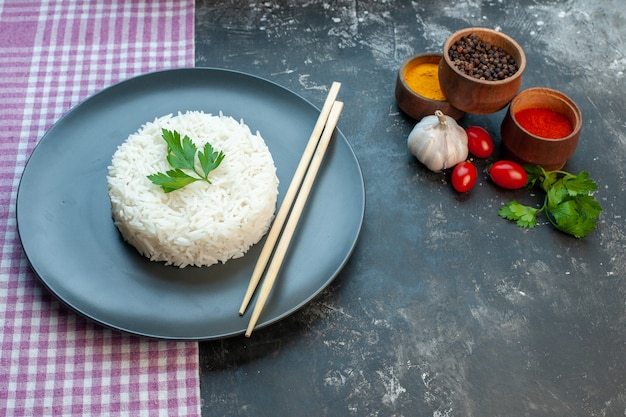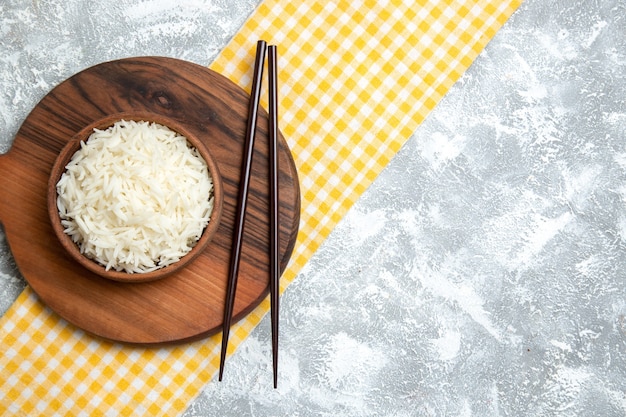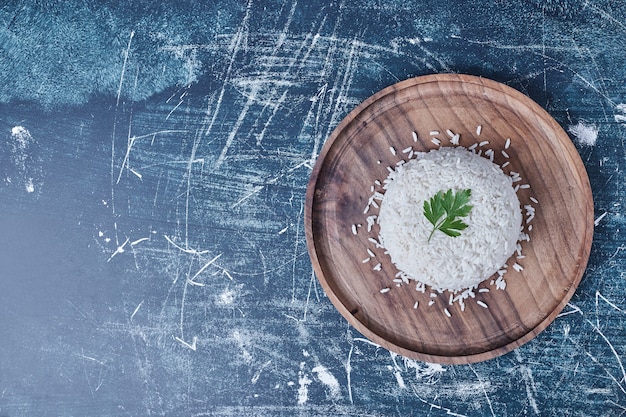(Part 1) The Essential Equipment: Your Rice-Cooking Arsenal

The Right Pot: Your Rice's Home
Honestly, the best pot for rice is a dedicated rice cooker. You just chuck in the rice, water, and press a button. It's that easy! However, if you're like me and prefer a bit more control (and a bit of a challenge!), a good quality saucepan will do just fine.Why a Rice Cooker is a Game Changer:
Simplicity: Just add rice and water, and let the rice cooker do its magic. No need to constantly monitor the cooking process. Even Cooking: Rice cookers distribute heat evenly, ensuring that every grain cooks perfectly. Less Mess: Rice cookers typically have a non-stick inner pot, making cleanup a breeze. Keeps Rice Warm: Most rice cookers have a "keep warm" function, allowing you to enjoy freshly cooked rice whenever you're ready.The Right Measuring Cup: Precision is Key
You might think all measuring cups are the same, but believe me, they're not! A proper measuring cup with a spout is a must for accurate rice cooking. This makes it so much easier to get the right amount of water into your rice, ensuring a perfect consistency.Why a Spouted Measuring Cup is a Must:
Precise Measurement: A spouted measuring cup allows for more accurate pouring, reducing the risk of over- or under-filling your rice pot. Less Mess: The spout helps prevent spills and drips, keeping your kitchen clean. Easy Transfer: The spout allows for smooth and controlled pouring into your rice pot, avoiding messy splashes.The Right Rice: The Star of the Show
Now, this is where it gets interesting. Not all rice is created equal! For the fluffiest, most delicious rice, you'll want to choose a long-grain variety. These varieties, like basmati rice and jasmine rice, are known for their individual grains, which cook up separate and fluffy, rather than sticking together.Why long-grain rice is Best for Fluffy Results:
Longer Grains: Long-grain rice has elongated grains that cook up separately, resulting in fluffy, non-sticky rice. Distinct Flavor: Different types of long-grain rice offer unique flavours and aromas, enhancing your culinary experience. Versatile: Long-grain rice is incredibly versatile, working well in a variety of dishes, from simple side dishes to more complex rice bowls.The Right Water: The Unsung Hero
I know, it sounds simple, but water is absolutely crucial to perfect rice. Use fresh, cold water. The temperature and purity of your water can significantly impact the cooking process and the final texture of your rice.Why Fresh, Cold Water is Essential:
Clean Taste: Fresh water ensures that your rice doesn't pick up any unwanted flavors from stale or contaminated water. Better Absorption: Cold water allows the rice to absorb the water more evenly, resulting in a more consistent texture. Enhanced Flavor: Fresh water brings out the natural flavors of the rice, creating a more enjoyable culinary experience.(Part 2) The Perfect rice-to-water ratio: Unlocking the Secret

The "One Finger" Rule: A Simple Trick for Perfect Results
This little trick has been passed down through generations in my family. It's so simple, it's almost ridiculous. After adding the rice to your pot, add enough water so that it's about one fingertip above the rice level.How the "One Finger" Rule Works:
Ideal Ratio: This simple technique provides the perfect balance of water to rice, ensuring that the rice cooks evenly and absorbs all the water. Easy to Remember: The "One Finger" rule is a simple visual cue that eliminates the need for complicated measurements. Room for Variation: While the "One Finger" rule is a great starting point, you can adjust the water level slightly based on the specific type of rice you're using and your desired texture.Don't Panic About the Water: Embrace the Flexibility
You might be thinking, "What if I don't get it exactly right?" Don't worry! It's not an exact science. You can always add a bit more water if it seems too dry, or let it simmer longer if it needs more time to absorb the water.Adjusting the Water Level:
Adding More Water: If the rice seems too dry during cooking, you can carefully add a little more water, being mindful of the texture you desire. Simmer Longer: If you've added the right amount of water, but the rice is still not fully cooked, you can simmer it for a few extra minutes to allow it to absorb the remaining liquid.(Part 3) The Cooking Process: A Step-by-Step Guide

Step 1: Rinse and Drain the Rice: A Clean Start
The first step is to rinse your rice. This gets rid of excess starch, which can make your rice sticky. Just put the rice in a fine-mesh sieve and run cold water over it until the water runs clear.Why Rinsing Rice is Essential:
Reduced Stickiness: Rinsing removes excess starch, which can cause rice to clump together during cooking. Cleaner Taste: Rinsing helps remove any impurities or debris that may be present in the rice, ensuring a clean and pure flavor. Lighter Texture: Removing excess starch results in a lighter, more fluffy texture.Step 2: Add the Rice to the Pot: A Simple Start
Now, add the rinsed rice to your pot. No oil or anything else is needed at this stage.Step 3: Add the Water: The Foundation of Flavor
Remember the "One Finger" rule? Pour the water into the pot, making sure it's about a fingertip above the rice.Step 4: Bring the Water to a Boil: The Initial Heat
Place the pot on the stove over medium heat. Bring the water to a boil. You'll know it's ready when you see tiny bubbles breaking the surface.Step 5: Reduce Heat and Simmer: Patience is Key
Once the water is boiling, turn the heat down to low and cover the pot with a lid. Allow the rice to simmer for about 15 minutes, or until the water is absorbed.Why Simmering is Crucial:
Even Cooking: Simmering at a low temperature allows the rice to cook evenly and absorb the water without burning. Maximum Flavor: The slow simmering process allows the rice to develop its full flavor potential. Fluffy Texture: Simmering helps create a light and fluffy texture that separates perfectly.Step 6: Let the Rice Rest: The Final Stage
After the water has been absorbed, remove the pot from the heat and let the rice rest for about 10 minutes with the lid still on. This allows the rice to steam and fluff up.Why Resting is Important:
Continue Cooking: The rice continues to cook and absorb the remaining moisture while resting. Fluffy Texture: Resting allows the rice to steam and fluff up, creating a light and airy texture. Enhanced Flavor: The steam helps to concentrate the flavors of the rice.Step 7: Fluff the Rice: The Finishing Touch
After 10 minutes, gently fluff the rice with a fork. You'll be amazed by the fluffy, light texture.(Part 4) My Personal Touch: Flavour Variations
Okay, so we've covered the basics. But what about adding a bit of your own personal touch? Here are some of my favourite tricks for flavouring rice:The Classic: Salt and Butter: A Simple Symphony of Flavors
A sprinkle of salt and a knob of butter are always a winning combination. They enhance the natural flavour of the rice and add a touch of richness.Why Salt and Butter Elevate Rice:
Salt Enhances Flavor: Salt brings out the inherent sweetness of the rice, creating a more complex taste. Butter Adds Richness: Butter adds a creamy, velvety texture and a hint of savory deliciousness to the rice. Versatility: This simple combination works well with a variety of dishes, from simple side dishes to more elaborate meals.The Asian Twist: Soy Sauce and Sesame Oil: A Touch of the Orient
For a more Asian-inspired flavour, add a splash of soy sauce and a drizzle of sesame oil to the rice while it's cooking. It's a simple trick that makes a big difference.Why Soy Sauce and Sesame Oil are a Winning Combo:
Soy Sauce for Umami: Soy sauce adds a savory, umami-rich flavor that complements the rice perfectly. Sesame Oil for Aroma: Sesame oil brings a nutty, fragrant aroma that elevates the overall taste. Asian-Inspired: This combination creates a delicious and authentic Asian-inspired flavor profile.The Aromatic Touch: Garlic and Herbs: A Burst of Fragrance
Add a clove or two of garlic to the pot with the rice and water for a delicious aroma. You can also add your favourite herbs, like thyme or rosemary, for a more complex flavour.Why Garlic and Herbs Add Depth:
Garlic for Aroma: Garlic adds a pungent, savory aroma that permeates the rice, creating a more flavorful experience. Herbs for Complexity: Herbs like thyme and rosemary add a touch of freshness and complexity to the rice. Customizable Flavor: Choose your favorite herbs to personalize the flavor profile of your rice dish.(Part 5) The Importance of Timing: Patience is Key
Cooking perfect rice takes a little bit of patience. You can't rush the process. Allow the rice to simmer properly and rest for the recommended time.Signs of Undercooked Rice: Hard and Chewy
If your rice is undercooked, it will be hard and chewy. It might also still have a bit of water left in the pot.Remedies for Undercooked Rice:
Simmer Longer: Return the pot to the stove and simmer for a few more minutes, ensuring that the rice absorbs the remaining water. Add More Water: If needed, add a small amount of water to the pot and simmer until the rice is cooked through.Signs of Overcooked Rice: Mushy and Sticky
If your rice is overcooked, it will be mushy and sticky. It might also be a bit dry.Remedies for Overcooked Rice:
Fluff Thoroughly: Gently fluff the rice with a fork to separate the grains and create a less sticky texture. Serve Immediately: Overcooked rice tends to become stickier as it sits, so serve it immediately after cooking.(Part 6) Troubleshooting: Common Mistakes and Solutions
No one's perfect, and we've all made mistakes in the kitchen. But don't worry! Here are some common rice-cooking mistakes and how to fix them:Mistake 1: Too Much Water: A Soggy Situation
If you've added too much water, don't panic! Just keep cooking the rice until the excess water has evaporated. You can also try stirring the rice to help it absorb the water faster.Remedies for Too Much Water:
Continue Cooking: Allow the rice to cook until the excess water is absorbed, ensuring that the grains don't become mushy. Stir Gently: Stir the rice carefully during cooking to help it absorb the water more evenly.Mistake 2: Not Enough Water: A Dry Dilemma
If you haven't added enough water, you can try adding a little bit more while the rice is still cooking. Be careful not to add too much water, or your rice will become mushy.Remedies for Not Enough Water:
Add Water Carefully: Add a small amount of water to the pot, being mindful not to drown the rice. Simmer Longer: Allow the rice to simmer for a few more minutes to ensure that it absorbs the additional water.Mistake 3: Rice Sticking to the Pot: A Sticky Situation
If your rice is sticking to the pot, you might be using a pot that isn't non-stick. Try using a different pot, or lightly grease the bottom of your pot before adding the rice.Remedies for Rice Sticking to the Pot:
Use Non-Stick Pot: Invest in a quality non-stick pot to prevent sticking. Grease the Pot: Lightly grease the bottom of your pot with a little oil or butter before adding the rice.Mistake 4: Rice is Too Dry: A Parched Problem
If your rice is too dry, it might be because you haven't cooked it long enough. Try simmering the rice for a few more minutes and then letting it rest for longer.Remedies for Dry Rice:
Simmer Longer: Allow the rice to simmer for a few extra minutes to ensure that it absorbs the necessary water. Rest Longer: Let the rice rest for a few more minutes after cooking to allow it to steam and absorb any remaining moisture.(Part 7) Beyond the Basics: Creative Rice Dishes
Perfect rice is a blank canvas for all sorts of delicious dishes. Here are a few ideas to get your creative juices flowing:rice salads: A Refreshing and Flavorful Option
Mix your fluffy rice with fresh vegetables, herbs, and a tangy dressing. You can even add some cooked chicken or tofu for a more substantial meal.Popular Rice Salad Combinations:
Greek Rice Salad: Combine rice with cucumber, tomatoes, feta cheese, olives, and a lemon vinaigrette. Asian Rice Salad: Mix rice with shredded cabbage, carrots, edamame, and a sesame-ginger dressing. Mexican Rice Salad: Combine rice with black beans, corn, bell peppers, cilantro, and a lime vinaigrette.Rice Bowls: A Customizable Meal in a Bowl
Rice bowls are a great way to create a quick and healthy meal. Start with a base of rice and then add your favourite toppings, like roasted vegetables, grilled chicken, or spicy sauces.Creative Rice Bowl Ideas:
Teriyaki Rice Bowl: Layer rice with grilled chicken, stir-fried vegetables, and a teriyaki sauce. Mediterranean Rice Bowl: Combine rice with hummus, roasted vegetables, feta cheese, and a drizzle of olive oil. Spicy Kimchi Rice Bowl: Mix rice with kimchi, a fried egg, and a spicy gochujang sauce.Rice Fritters: Crispy and Delicious Delights
Make delicious rice fritters by combining cooked rice with chopped vegetables, spices, and a binding agent like egg or flour. Fry them until golden brown and crispy.Rice Fritter Variations:
Vegetable Rice Fritters: Combine cooked rice with chopped carrots, zucchini, onions, and spices. Spicy Corn and Chilli Rice Fritters: Mix cooked rice with corn, jalape??os, and cilantro for a spicy kick. sweet potato and Coconut Rice Fritters: Combine cooked rice with sweet potato, coconut flakes, and spices for a sweet and savory treat.rice pudding: A Sweet and Comforting Dessert
For a sweet treat, try making rice pudding. Simply simmer rice in milk with sugar and spices until it becomes creamy and delicious.Classic Rice Pudding Flavors:
Vanilla Rice Pudding: Simmer rice in milk with sugar and vanilla extract. Cinnamon Rice Pudding: Add cinnamon sticks to the milk while simmering for a warm and comforting flavor. Chocolate Rice Pudding: Add a touch of cocoa powder to the milk for a decadent and chocolatey treat.(Part 8) FAQs
Q1: What is the best type of rice for making fluffy rice?
For the fluffiest rice, you'll want to choose a long-grain variety, like basmati rice or jasmine rice. These varieties have longer grains that cook up separately, resulting in a fluffy, non-sticky texture.
Q2: How much water should I use for cooking rice?
Use the "One Finger" rule. Add enough water so that it's about one fingertip above the rice level. This ensures that the rice cooks evenly and absorbs all the water.
Q3: What happens if I overcook rice?
If you overcook rice, it will be mushy and sticky. The grains will lose their structure and become clumped together. You can try to fluff the rice with a fork to separate the grains, but it won't be as fluffy as properly cooked rice.
Q4: Can I add anything to rice while it's cooking?
Yes! You can add things like salt, butter, garlic, herbs, or soy sauce while the rice is cooking. These ingredients add flavor and aroma to the rice, creating a more complex and satisfying taste.
Q5: How can I make my rice even fluffier?
After the rice has been cooked, let it rest for about 10 minutes with the lid on. This allows the rice to steam and fluff up. You can also try fluffing the rice with a fork after it's rested.
(Part 9) My Final Thoughts: A culinary journey
And there you have it! My secrets to cooking perfect fluffy white rice. It's a journey, a process, and an adventure, just like any other culinary pursuit. But trust me, the reward is worth it. So, go on, experiment, and discover the joy of perfect rice! Happy cooking!Everyone is watching

Corn on the Cob: The Ultimate Guide to Perfectly Cooked Ears
Healthy MealsAh, corn on the cob. Just the name evokes images of sunny days, barbecues, and that sweet, juicy flavour that ...

Perfect Pork Roast Oven Cooking Time: A Guide to Delicious Results
Healthy MealsThere's something truly satisfying about a perfectly roasted pork. The aroma alone is enough to make your mout...

Ham Cooking Time: How Long to Bake, Smoke, or Boil a Delicious Ham
Healthy MealsAh, ham. It's a classic, isn't it? A real crowd-pleaser, especially around holidays. And when done right, it'...

Scallops: The Ultimate Guide to Perfect Cooking
Healthy MealsAh, scallops. Those delicate, sweet, and utterly delicious morsels of the sea. They hold a special place in my...

Spaghetti Squash: The Ultimate Guide to Cooking and Serving
Healthy MealsRemember that time you saw spaghetti squash at the supermarket, looking all bumpy and strange, and thought, "W...
